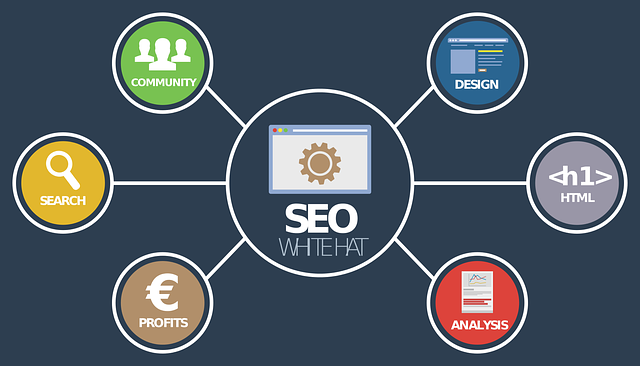-By: Bhavisha Changrani
In recent years, Google’s search algorithms have undergone a dramatic evolution, moving away from simple keyword-based ranking systems toward more sophisticated, AI-driven models. This shift is transforming how we approach Search Engine Optimization (SEO) and content creation. With advancements such as BERT (Bidirectional Encoder Representations from Transformers) and MUM (Multitask Unified Model), Google’s AI-powered search results are reshaping the landscape of digital marketing. As Google continues to improve its algorithms, both marketers and content creators must adapt to these new dynamics in order to stay relevant and visible in search results.

The Rise of AI in Google’s Search Algorithms
For years, Google’s search algorithm has relied on machine learning (ML) and artificial intelligence (AI) to better understand user intent, content relevance, and search context. Historically, keywords were the cornerstone of SEO, with rankings determined by matching user queries to web pages that contained those terms. However, Google’s evolving AI capabilities have brought new dimensions to how search engines interpret and rank content.
Two of the most impactful AI-driven updates in Google Search have been BERT (released in 2019) and MUM (announced in 2021), both of which aim to improve how the search engine understands language and context. These updates represent a shift from traditional query-based systems to a more nuanced, human-like understanding of language.
What is BERT?
BERT is a natural language processing (NLP) model that enables Google to better understand the context and intent behind search queries. Traditional search engines would often match queries with keywords, even if the results weren’t entirely aligned with the user’s needs. BERT, however, uses machine learning to understand the entire query, considering both the words and the relationships between them.
For example, if someone searches for “2024 car repair costs near San Francisco,” BERT would analyze the full meaning of the query, understanding the user’s intent (looking for information about car repair costs in the San Francisco area for 2024) and match them to the most relevant, high-quality content.

Impact on SEO
Keyword-focused optimization becomes less effective. Marketers and content creators need to focus on user intent and creating content that answers specific, nuanced queries.
Content that is more conversational and natural-sounding is favored, as BERT rewards pages that match the context of a search more than the exact keywords.
SEO professionals must optimize for long-tail keywords and conversational queries that reflect how people naturally ask questions.
The Introduction of MUM
While BERT is highly effective for understanding individual queries, MUM takes things a step further by offering a more advanced, multitask approach to search. MUM, which is built on a powerful Transformer-based architecture similar to BERT, is designed to understand complex, multi-step queries and provide results that answer those questions in more comprehensive and diverse ways.
For example, if a user searches for something like, “How can I improve my photography skills for a wedding shoot in a low-light environment?” MUM helps Google provide more diverse answers, including tex MUM is capable of interpreting various components of a query, such as wedding photography, low-light scenarios, helpful tips, and actionable solutions, all in one process.

Impact on SEO
MUM helps Google provide more diverse answers, including text, images, and even videos .This means that content creators may need to produce multimedia content to ensure they are discovered in a broader range of search results (e.g., videos, infographics, or step-by-step tutorials).
Multilingual search: MUM’s capabilities extend beyond just English. It allows Google to draw insights from multiple languages, so content creators who localize their content may see a broader reach across global markets.
SEO will increasingly require content to address multi-dimensional queries, including videos, images, FAQs, and long-form content, rather than just focusing on keyword-rich text.
How AI Is Changing SEO Tactics
The rise of AI in Google’s search algorithms—especially with BERT and MUM—has forced a rethinking of traditional SEO strategies. Marketers must now optimize for user intent and contextual relevance rather than focusing purely on keyword matching. Here are some key SEO tactics and best practices for content creators and marketers in this new AI-powered landscape:
1. Focus on User Intent and Context
Instead of obsessing over specific keywords, understand the intent behind a user’s search. Consider asking questions such as: What issue is the user seeking to resolve? What do they really need to know?
Structure content to answer questions directly and comprehensively. Featured snippets and people also ask boxes are often pulled from content that
Produce High-Quality, Relevant Content
Google’s AI is now better at identifying content that is comprehensive and contextually relevant. Long-form, in-depth content that answers a variety of related questions is more likely to rank well.
Content should address multiple angles of a topic to satisfy complex search queries, as MUM understands more than just individual keywords.

Optimize for Conversational and Natural Language
With BERT’s focus on understanding the meaning behind queries, content that reads like natural conversation is increasingly favored. Avoid overly technical or keyword-stuffed copy and instead create content that mimics how people actually speak or ask questions.
Consider voice search optimization as well. People use voice commands differently than they type, often using longer, more conversational phrases.
4. Embrace Multimedia Content
With MUM’s ability to process different types of media, incorporating video, images, infographics, and podcasts into your content strategy is essential. Providing diverse content types ensures that your page is more likely to be selected for rich snippets and visual search results.

5. Increase Content Accessibility and Structure
Google’s AI algorithms now value well-structured content. Use clear headings (H1, H2, H3), bullet points, and schema markup to help Google understand your content’s structure and relevance.
Focus on mobile optimization as well, since Google’s algorithms prioritize mobile-first indexing.
6. Leverage Local SEO and Hyperlocal Content
Google’s AI improvements also enhance local search results. Ensure that your content is geographically relevant and optimized for local SEO by incorporating location-based keywords, using Google My Business, and encouraging local reviews.
7. Stay Ahead with Multilingual and Multicultural Content
MUM’s multilingual capabilities open up new opportunities for reaching global audiences. By creating content that can easily be translated or localized for different regions, you can tap into a broader user base.
The Implications for Content Creators
For content creators, this AI evolution means that creating content is no longer just about targeting keywords or even producing long-form pieces. To stay ahead, you need to think in terms of delivering comprehensive, user-first experiences that reflect the complexity of modern search queries.
Adopt a holistic content approach: Develop content that answers the user’s query thoroughly, including all possible facets (text, images, videos, guides).
Be nimble:
As AI continues to evolve, SEO strategies will need constant fine-tuning. Keep up-to-date with Google’s updates and experiment with new formats and content types.
Prioritize user experience: Google is getting better at recognizing websites with excellent UX, fast loading speeds, and clear navigation. A positive user experience will increasingly correlate with better rankings.

Conclusion
The future of search is undoubtedly powered by AI, and Google’s BERT and MUM updates are at the forefront of this transformation. These changes are pushing content creators and marketers to evolve their SEO strategies from a keyword-centric focus to one that emphasizes user intent, context, and content diversity. In this new world of search, success will depend on delivering content that answers complex queries, engages users across different media, and provides real value in a way that feels natural and human. As AI continues to shape the future of search, those who adapt early will be well-positioned to thrive in the evolving landscape.








